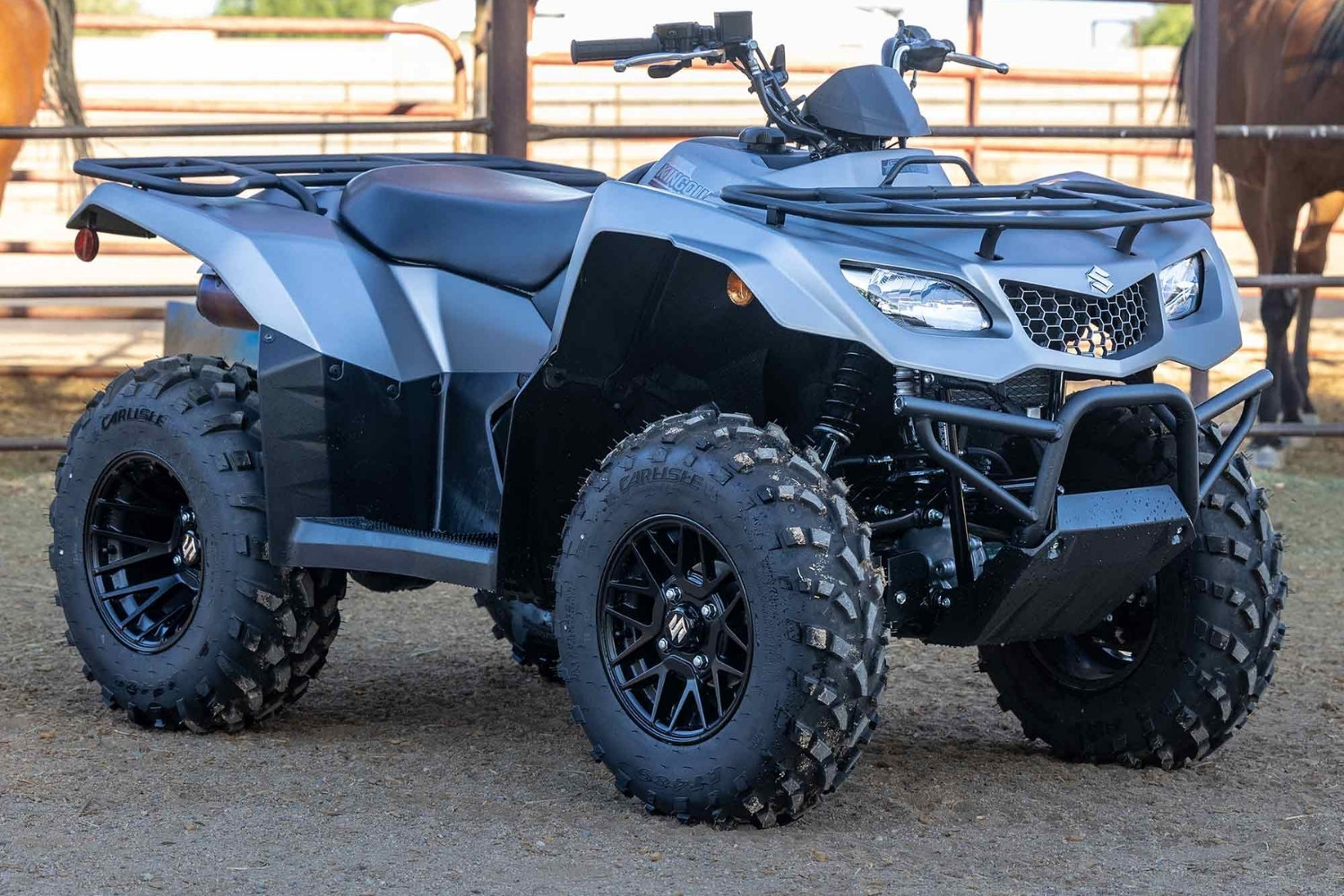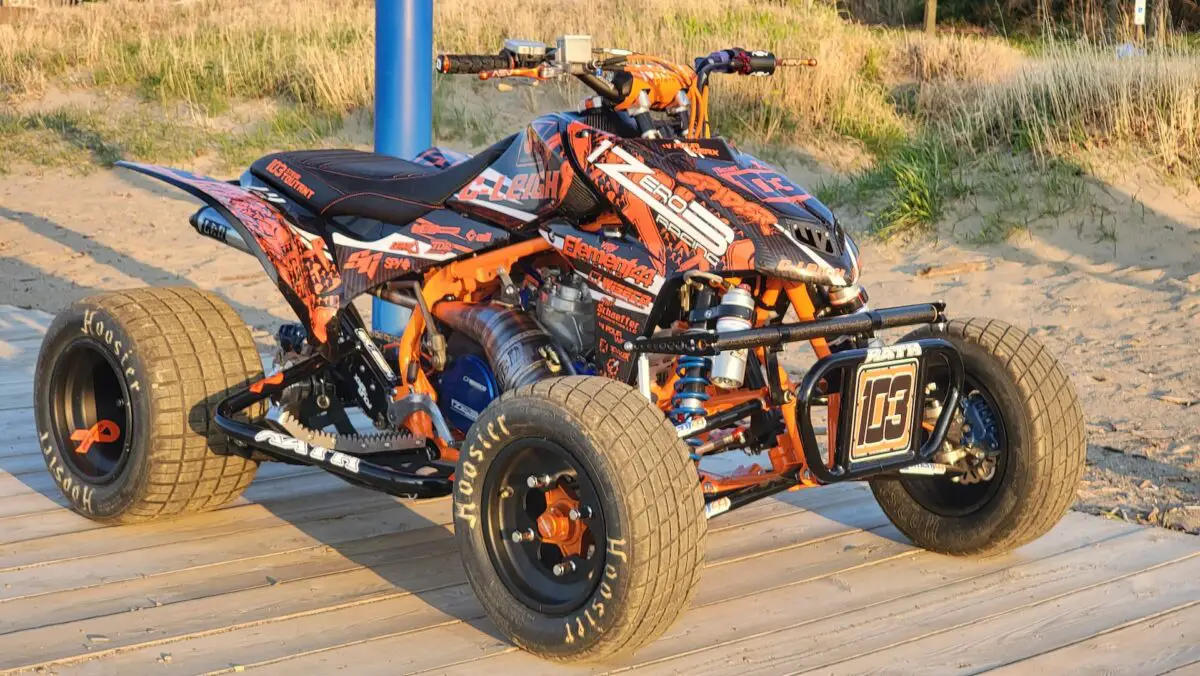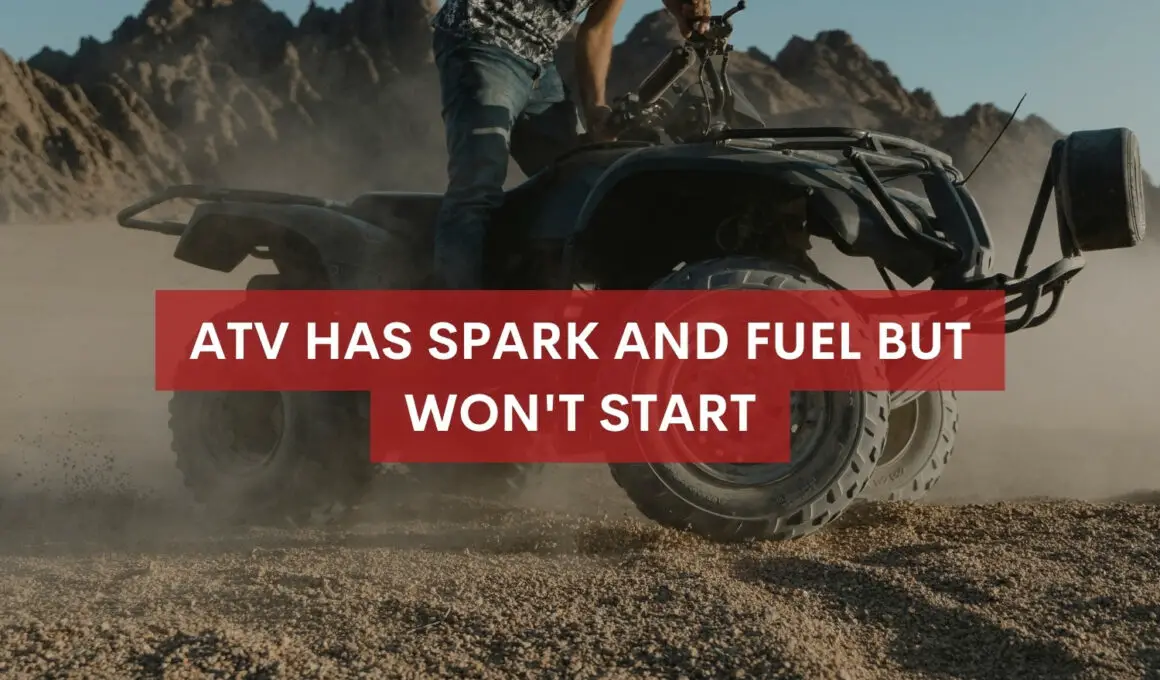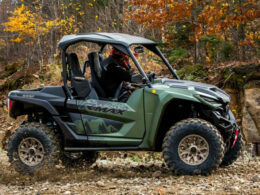In This Article Show
There’s a certain thrill to off-roading that’s hard to match – the wind in your face, the roar of the engine, and the challenge of tackling rugged terrains. Whether it’s on a dirt bike, a UTV, or an ATV, the adrenaline rush remains unparalleled.
With years of experience in the world of off-roading and a keen specialization in these machines, I’ve faced my share of challenges, and one that comes up frequently is a stubborn ATV that refuses to start even when it has spark and fuel. It’s indeed a head-scratcher, that one.
Everything seems primed to go – you’ve got your ignition spark, your tank’s full – but that engine won’t roar to life. It can be downright frustrating, especially when you’re itching to hit the trails.
This isn’t just a random occurrence; it’s a common hiccup many off-road enthusiasts encounter. So, if you’re wondering why your trusty ATV isn’t responding, this post is for you. I’ll guide you through the causes and, most importantly, their fixes.
Understanding the Basics
Navigating the world of ATVs isn’t just about skillful riding; it’s also about understanding the machines we so dearly love. Before we dive into troubleshooting, it’s essential to grasp some foundational concepts, ensuring we’re all on the same page. So, let’s break it down.

1. What Does “Having Spark and Fuel” Mean?
Every ATV, like other combustion engines, requires three fundamental elements to start and run: fuel, spark, and air. When we say an ATV has spark and fuel, we’re essentially confirming that two out of these three vital components are present.
2. Ignition System Explained
The ignition system of your ATV is like its heartbeat. It sends electric currents to the spark plug, igniting the air-fuel mixture in the combustion chamber. A strong, consistent spark ensures your ATV fires up and maintains a steady run.
3. The Role of Fuel Delivery
Fuel, on the other hand, is the lifeblood. It flows from the tank, through the lines, and into the carburetor or fuel injector. Here, it mixes with air to create the perfect air-fuel mixture ready for combustion. The efficiency and cleanliness of this delivery process are pivotal for smooth operation.
But here’s the catch 👇
Even if both spark and fuel are present, a malfunction in how they operate or the precise ratios in which they mix with air can disrupt the starting process. Think of it as having all the ingredients for a cake, but if mixed in the wrong order or proportion, the result might not be as expected.
Common Causes When ATV Has Spark and Fuel But Doesn’t Start
Ah, the crux of the matter. Having established the foundational knowledge, it’s time to identify the culprits. Remember, having spark and fuel is just part of the equation. The real devil is in the details. Let’s unmask these devils.
1. Carburetor Issues
Clogged Jets or Passages
The carburetor, in its essence, is like a kitchen mixer for your ATV, blending air and fuel in just the right amount. Tiny jets and passages can get clogged, often due to dirt or stale fuel. If they’re blocked, the air-fuel mixture won’t be optimal, leading to starting troubles.
Stuck Float
The float in the carburetor regulates the amount of fuel entering the system. A stuck or malfunctioning float can flood the engine with too much fuel or starve it.
Incorrect Settings or Adjustments
Sometimes, after maintenance or over time, the settings on your carburetor can go awry. This can result in an imbalanced air-fuel mix, leading to those frustrating non-starts.

2. Air Intake & Filter Problems
Clogged or Dirty Air Filter
The air filter is your ATV’s breathing apparatus. A clogged filter chokes the engine, depriving it of the vital air it needs to combust fuel.
Leaks in the Air Intake System
If there’s a leak in the air intake system, the air-fuel ratio can lean out (too much air), causing the ATV to struggle to start or run smoothly.
3. Compression Issues
Damaged Piston Rings
These rings seal the combustion chamber. If they’re worn out or damaged, compression can leak, weakening the engine’s power.
Bent or Burnt Valves
Valves that don’t seal correctly will leak compression. Imagine trying to blow up a balloon with a hole; it’s a similar concept.
Cylinder or Head Gasket Leaks
A leaky gasket can reduce compression, affecting the ATV’s ability to start and run.
4. Faulty Electrical Components
Damaged CDI box
The Capacitor Discharge Ignition (CDI) box is like the brain behind the spark. If it’s malfunctioning, the spark might be inconsistent or entirely absent.
Malfunctioning Sensors
Modern ATVs have sensors that monitor everything from throttle position to engine temperature. A faulty sensor can send incorrect data, throwing off the ignition timing or fuel delivery.
5. Fuel Quality and Age
Stale or Contaminated Fuel
Fuel isn’t ageless. Over time, especially if stored improperly, it can degrade or become contaminated, which affects its combustibility.
Water Mixed with Fuel
Water is an engine’s nemesis. Even a small amount of water in the fuel can hinder the combustion process.
6. Cam Timing Issues
Jumped Timing Chain
The timing chain ensures the camshaft and crankshaft move in sync. If it jumps, it can throw off the engine’s timing, leading to starting issues or poor performance.
Damaged Timing Components
Like every machine, wear and tear can affect the timing components. If they’re out of sync, it’s like trying to dance off-beat. The rhythm of the engine is just off.
How to Fix the Common Causes
Having identified the potential culprits, most of these issues can be rectified, getting your ATV roaring once again. Let’s roll up our sleeves and dive into the solutions.

1. Addressing Carburetor Issues
Cleaning the Carburetor: Use a carburetor cleaner spray to dissolve and dislodge any gunk or deposits. Disassembling and soaking the components in a carb cleaning solution overnight can also be beneficial for stubborn cases.
Adjusting or Replacing the Float: If the float is stuck, gently cleaning and adjusting it can solve the issue. In some cases, replacement might be necessary.
Re-tuning the Carburetor: Refer to the manufacturer’s guide and adjust the settings to their recommended levels. Specialized carb tuning kits are available to help with this.
2. Solving Air Intake & Filter Problems
Cleaning or Replacing the Air Filter: Blow out the dust using compressed air or replace the filter if it’s beyond cleaning.
Checking for and Sealing Air Leaks: A visual inspection can help locate leaks. Once identified, they can be sealed using silicone or replaced if the damage is extensive.
3. Tackling Compression Issues
Performing a Compression Test: Use a compression tester to diagnose potential leaks. This tool can give insights into the health of your piston rings, valves, and gaskets.
Repairing or Replacing Damaged Components: Worn-out piston rings, bent valves, or a faulty head gasket may require professional intervention or replacement.
4. Dealing with Faulty Electrical Components
Testing and Replacing the CDI Box: Multimeters can help test the CDI box for its efficiency. If it’s malfunctioning, a replacement would be in order.
Checking Sensors for Correct Functionality: Using an OBD (On-Board Diagnostics) tool can help diagnose sensor issues. Faulty sensors should be replaced.
5. Improving Fuel Quality
Draining and Refilling with Fresh Fuel: Remove old or contaminated fuel and refill the tank with fresh gasoline. Always store fuel in a cool, dry place to maintain its quality.
Using Fuel Stabilizers for Prolonged Storage: If you’re storing your ATV for an extended period, adding a fuel stabilizer can prevent the fuel from degrading.
6. Correcting Cam Timing Issues
Checking and Resetting the Timing Chain: Refer to the ATV’s service manual to ensure the timing chain is set correctly. If it’s loose or jumped, it may need adjustment or replacement.
Inspecting and Replacing Damaged Timing Components: Regularly check the sprockets, tensioners, and other timing components for wear. Replace if needed.
Preventative Maintenance for Reliable ATV Starts
A proactive approach is often the best defense against mechanical hiccups. While dealing with issues as they arise is crucial, preventing them from occurring in the first place ensures that you get more time on the trails and less in the garage. Here’s how to keep your ATV in top shape for those reliable starts.
1. Routine Inspection
- Electrical Components: Regularly inspect wiring, connectors, and other electrical components for wear, corrosion, or damage. A simple visual check can catch many issues before they become problematic.
- Air Filter: At least once a month, or after particularly dusty rides, check the air filter. A clean filter guarantees optimal air intake and ensures the best air-fuel mixture.
- Fuel Quality: Make it a habit to use fresh fuel and avoid letting the gasoline sit in the tank for too long. Periodically inspect the fuel for contaminants or signs of degradation.
2. Scheduled Maintenance
- Oil and Filter Change: Regular oil changes, as per the manufacturer’s recommendation, ensure that the engine remains lubricated and runs smoothly. Don’t forget to replace the oil filter as well.
- Spark Plug: Replace the spark plug at intervals suggested by the ATV’s manufacturer. Even if it seems okay, a fresh spark plug can significantly improve performance and starting reliability.
- Carburetor Adjustment: Every now and then, especially after significant altitude or climate changes, the carburetor might need a slight tune-up to deliver the ideal air-fuel ratio.
3. Winterization
- Fuel Stabilizer: If you’re storing your ATV for the winter, adding a fuel stabilizer prevents the gasoline from breaking down and keeps the internals of the fuel system clean.
- Battery Maintenance: Remove the battery and store it in a cool, dry place. Use a trickle charger to keep it charged during prolonged storage.
- Cover and Store: Store your ATV in a dry, protected area. Using a breathable cover can prevent moisture buildup and protect it from dust and debris.
4. Stay Updated
- Software Updates: For newer ATVs with electronic components, manufacturers may release software updates. These updates can improve the performance, efficiency, or safety of your ATV.
- Recalls and Service Bulletins: Stay informed about any recalls or service bulletins related to your ATV model. Manufacturers often provide fixes for known issues, ensuring you’re always riding safely.
Proactive maintenance doesn’t just save time and money; it ensures that every time you’re ready to ride, your ATV is too. Think of it as a bond of trust between you and your machine – care for it, and it will deliver countless thrilling rides in return.










